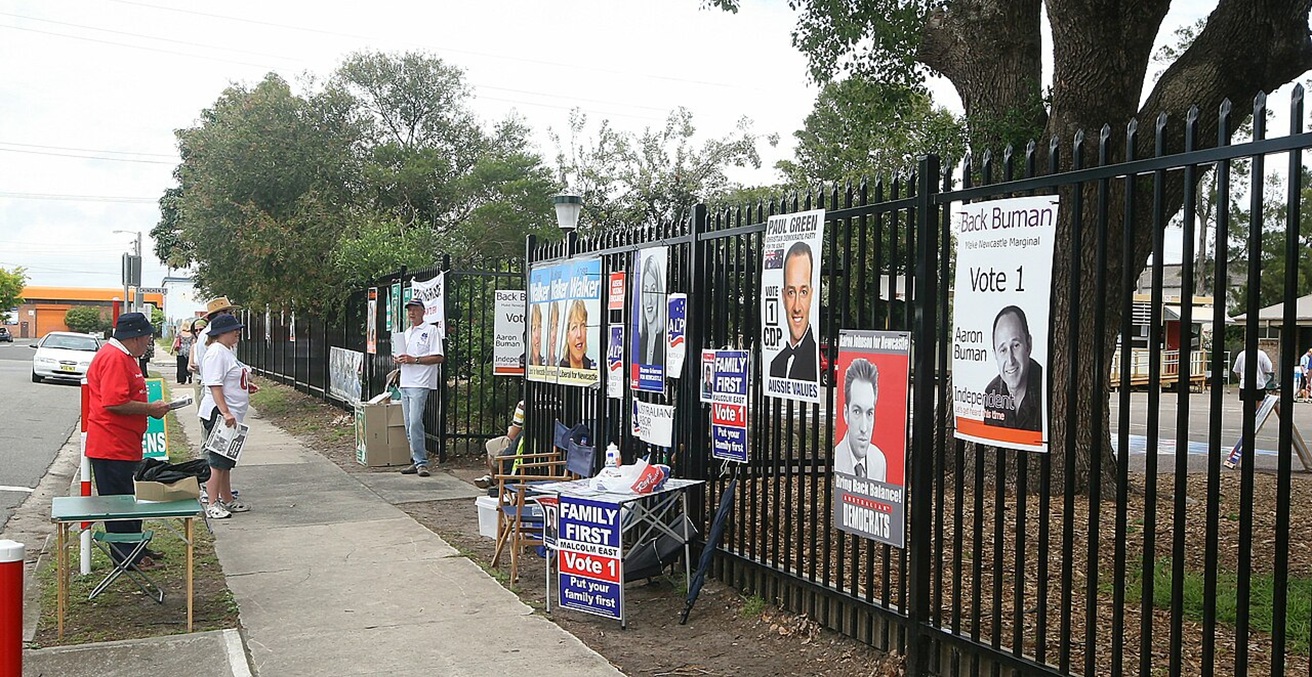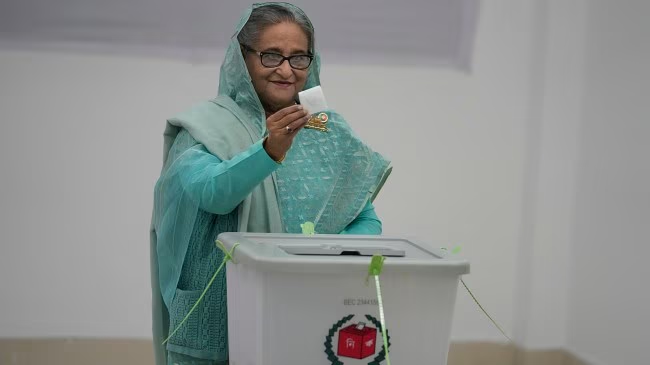Prof. Syed Munir Khasru
Australian Institute of International Affairs
May 1, 2025
Link: https://www.internationalaffairs.org.au/australianoutlook/election-2025-food-for-thought-as-aussies-head-to-the-polls/
________________________________________________________________________________
In this election, voter attention is focused on issues that influence both daily life and Australia’s long-term direction. This evolving political landscape is being shaped by widespread demand for meaningful change, particularly among younger voters who are expressing growing dissatisfaction with the status quo.
Currently, there is a record 98.2 percent voter enrolment rate, including 92 percent of eligible youth, indicating political engagement is reaching new heights across all demographics. Moreover, Millennials and Gen Z now set to outnumber older generations at the ballot box, and their leading concerns, such as housing, employment, and climate reflect, a strong desire for a political system that is more inclusive and responsive to everyday Australians. Consequently, how the major parties address these challenges will play a decisive role in shaping the country’s direction and earning public trust in this election.
On that note, four trending and emerging issues are likely to be used by voters as a critical lens in making up their mind as to who to vote for: (i) economy, trade & investment (ii) climate & energy (iii) international relations & strategic affairs (iv) digital, cybersecurity, and AI.
Economy, trade, & investment
In the last three years, unemployment has dropped to 3.7 percent, backed by strong public sector hiring and the replacement of outsourced roles. However, this heavy reliance on government-driven job creation has raised concerns about the sustainability of employment growth, especially given the lack of private sector dynamism and investment.
Despite targeted support, real wage growth has not kept pace with inflation and housing costs, leaving many households under pressure. On a lighter note, Stage Three tax cuts were adjusted to support low and middle-income earners, wages in care industries have improved, and broader wage gains remain modest. At the same time, competition reforms and social spending expansions have supported easing cost-of-living burdens, but these measures are yet to deliver the much-anticipated widespread financial relief.
In terms of housing, Labor’s pledge to build 100,000 affordable houses is behind schedule. Housing affordability remains one of Australia’s most urgent issues, worsened by population growth, migration pressures, and rising urban demand. Meanwhile, although inflation has moderated to 2.4 percent due to monetary tightening, household spending support has diminished some of the intended impact.
Australia continues to face skilled labor shortages in sectors like healthcare, tech, and engineering. Despite visa reforms and migration support, bureaucratic delays and weak retention strategies have left critical gaps unfilled. As the country approaches the 2025 election, these unresolved issues have become focal points for public frustration and growing opposition criticism
Climate & energy
From 2022-25, the Australian government committed to 43 percent reduction in greenhouse gas emissions by 2030 and targeted to reach net zero status by 2050. The government also promised to create over 600,000 jobs, primarily in regional areas, cut power bills by $275 annually, and increase renewable energy’s share to 82 percent by 2030.
To further support these goals, it introduced policies such as the Powering Australia Plan, the National EV Strategy, and the Climate Change Act 2022, which made the emissions target legally binding. Furthermore, major investments were made, including $20 billion to modernise the electricity grid, $4 billion for hydrogen technology, and over $200 million for community batteries and solar banks. As a result, emissions fell by 1.7 percent in 2022, though progress was uneven.
Despite these efforts, the Australian Conservation Foundation gave Labor’s climate policy a modest 54 percent, highlighting ongoing tensions between environmental goals and fossil fuel approvals. Moreover, with just 0.01 percent of GDP allocated to disaster risk reduction, stronger commitment and ongoing policy adjustments are needed to meet long-term targets.
Although Australia’s climate targets apply only to domestic emissions and not to those from exported fossil fuels, this creates a significant disconnect in Australia’s climate response. More so, as most coal and gas projects cater to export markets, and while this approach aligns with domestic accounting rules, it complicates global efforts to meet the Paris Agreement’s goal of limiting warming to below two degrees Celsius.
International relations & strategic affairs
After Albanese was elected, Australia launched the Pacific Climate Infrastructure Financing Partnership with AUD$350 million and invested $2.1 billion in maritime security. Aid to the Pacific reached a record $2 billion in 2024-25, with an additional AUD 125 million directed toward renewable energy. Complementing this, Foreign Minister Penny Wong visited all Pacific Islands Forum members, and a Pacific Engagement Visa was introduced. Alongside the adoption of a 0.5 percent GNI aid target and a broader increase in global aid to AUD 4.55 billion, these efforts have helped counter China’s regional influence.
At the same time, Australia strengthened its role in the Quad, prioritizing maritime and cyber cooperation, and launching the $16.5 million Cancer Moonshot initiative. The government also supported the AUKUS partnership by backing local companies to develop advanced electronic warfare technology under Pillar II. Albanese’s government invested over $8 million to boost Australian innovation and strengthen defence capabilities in collaboration with AUKUS allies.
Meanwhile, by 2023, diplomatic relations with China had begun to thaw as China resumed coal and timber imports, lifted its 80% barley tariff, and released Australian journalist Cheng Lei. Prime Minister Albanese’s visit to China, the first by an Australian leader in nearly a decade had marked a turning point in the restoration of a trade relationship worth over AUD 300 billion annually. In broader regional efforts, Australia launched the Southeast Asia Economic Strategy to 2040, hosted a special summit with ASEAN, and committed over $500 million to joint projects in climate, cybersecurity, and education. In the Indian Ocean, Australia expanded its engagement with IORA by co-chairing maritime safety efforts with India and investing in blue economy initiatives.
However, actual aid levels have stagnated at around 0.19 percent of GNI, placing Australia among the least generous OECD donors. In case of defence, though large-scale investments have been announced, many projects such as nuclear submarines and advanced missiles have long lead times. As a result, short-term capability gaps are emerging. For instance, Collins-class submarines will begin retiring in the 2030s, yet their replacements are not expected to be operational for several years.
Digital, Cybersecurity, and AI
Between 2022-25, Labor advanced cybersecurity and digital reforms. For instance, Clare O’Neil’s appointment as Australia’s first dedicated Minister for Cybersecurity indicated a structural shift, improving visibility and coordination. However, centralising cybersecurity under the Department of Home Affairs continues to raise concerns about oversight and contestability.
The government’s flagship 2023-2030 Cyber Security Strategy, backed by nearly $3 billion in funding, introduced a six-shield framework aimed at protecting citizens, SMEs, and critical infrastructure. Complementary reforms included the Cyber Security Act 2024, ransomware reporting mandates, and the introduction of minimum cybersecurity standards for IoT devices. Building on that, Labor also aimed to grow the tech workforce, introducing TAFE programs and grants.
Yet, real-world outcomes remain mixed. Despite an 8 percent rise in tech jobs, Australia still relies heavily on talent from overseas, highlighting the need for local talent development. With only 11,387 core cyber professionals and low female representation, further limits national capacity.
Additionally, digital services saw progress with a new myGov portal and Digital ID, now used by millions of Australians. Meanwhile, a $2.4 billion NBN upgrade improved internet access, especially in regional areas. Likewise, new laws strengthened data protection and banned under-16s from social media, yet major breaches persist. Overall, these changes improved access and trust, though privacy concerns linger.
Despite structural progress, Australia suffered four of its most damaging cyberattacks— Optus, Medibank, Latitude Financial, and MediSecure—between 2022-2024. The attacks compromised millions of personal records and resulted in over $450 million in financial losses. Moreover, Cybersecurity Research & Development investment remains significantly low, despite the sector contributing $9.99B in Gross Value Added. All in all, there is room for improvement.
2025 Election: Major Party Positions
As the 2025 election nears, Australia’s major parties offer distinct visions for the nation’s future. The Greens advocate for net-zero emissions by 2035, Universal Basic Income, rent controls, and major investment in renewables, funded through taxes on polluters and the wealthy. In contrast, Labor focuses on clean energy jobs, digital trade reform, housing delivery, and wage support, while aiming to shift job growth from the public to the private sector. Meanwhile, the Coalition prioritises tax cuts, deregulation, private investment, and stricter migration and national security policies.
Similarly, climate and energy policy draw out a clear divide among the parties. Labor proposes 43% emissions cut by 2030 and net-zero by 2050, supported by renewable expansion and electric vehicle incentives. The Coalition supports a slower transition, continued fossil fuel development, and the introduction of nuclear energy by 2035. On the other hand, the Greens push for the most ambitious targets, including 75% emissions cut by 2030, net-zero by 2035, a complete fossil fuel phase-out, and the use of carbon pricing. Climate policy ratings reflect these positions, with the Greens scoring 98 out of 100, Labor 54 and the Coalition just 1.
Foreign policy approaches also diverge as Labor promotes balanced diplomacy with both the US and China, combined with cautious defense spending and limited climate aid. In contrast, the Coalition adopts a more assertive stance, fully backing AUKUS and emphasizing national security, though this could strain regional relationships. Meanwhile, the Greens call for demilitarization, cancellation of AUKUS, and a stronger focus on peace, aid, and climate diplomacy, although critics doubt the feasibility of this approach.
What lies ahead?
Australia’s post-election outlook will be shaped by a mix of steady recovery and evolving risks.
The Reserve Bank of Australia (RBA) has warned that while Australian banks remain well-capitalized and household financial stress has eased slightly, rising home prices and growing household debt could become a concern if financial conditions continue to loosen.
However, Australia faces growing economic headwinds from external factors including a slowing Chinese economy and potential US tariffs and a considerable faction of its foreign trade is influenced by the two. In terms of foreign policy, Australia remains quite grounded and seemingly safe in its alliance strategy.
Although the government has committed to reducing emissions by 43% below 2005 levels by 2030, the Climate Action Tracker rates Australia’s efforts as “Insufficient,” citing contradictions between its clean energy push and ongoing fossil fuel reliance.
The 2023-2030 Cyber Security Strategy envisions Australia as a global leader in cyber resilience by 2030, emphasizing protections for citizens, businesses, and critical infrastructure through enhanced public-private partnerships. The federal government is shaping a national AI strategy aimed at unlocking up to AUD 600 billion in economic value by 2030, focusing on boosting investment, infrastructure, and high-skill jobs across industries.
How these plans and actions play through vastly depends on the party that will be elected to power on 3 May 2025-for better, or worse.




0 Comments